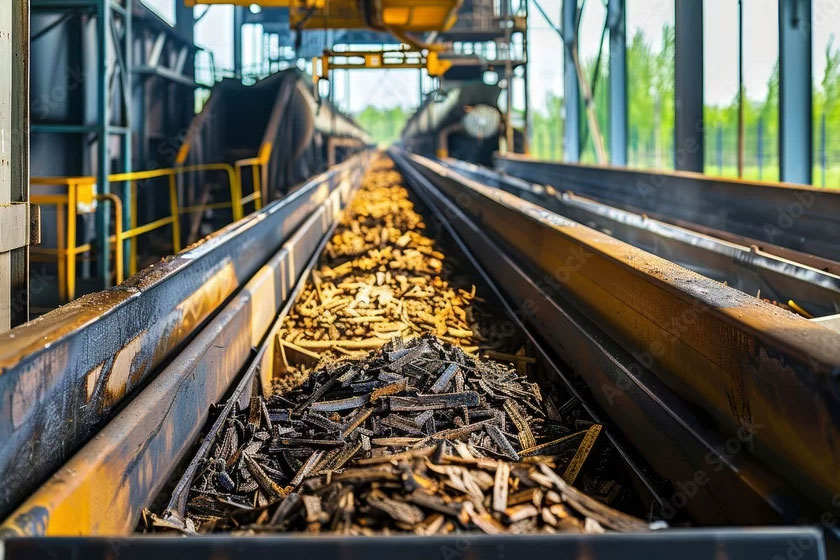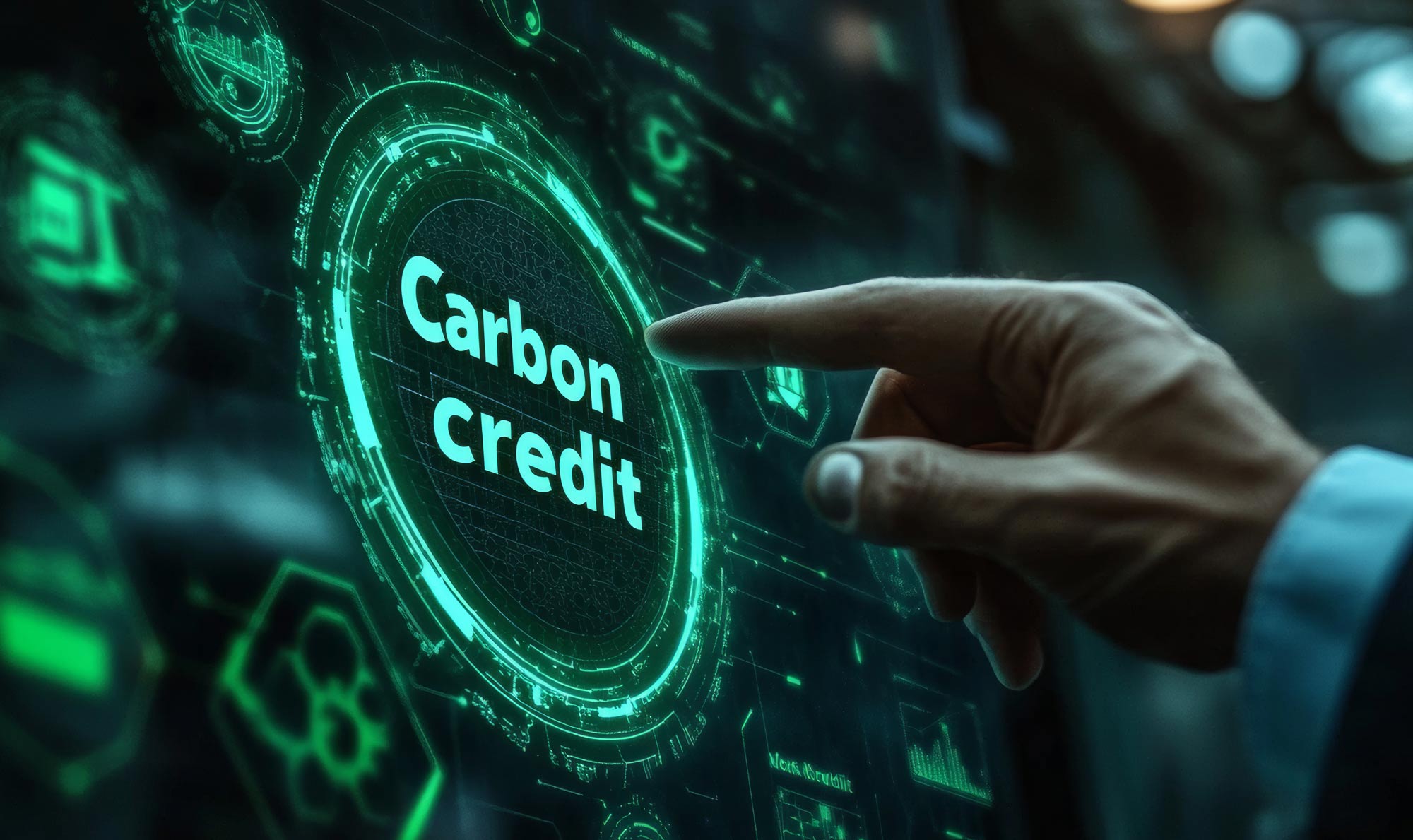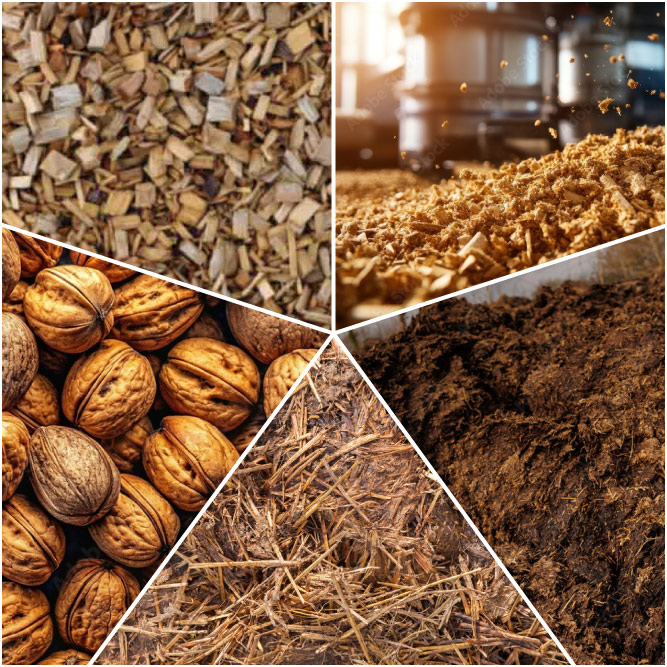Biochar Production (Pyrolysis)
& Profit from Carbon Credits
Biochar Production via Pyrolysis or Gasification

Biowęgiel może być wytwarzany z różnych surowców rolniczych, takich jak drewno, orzechy, łupiny, ściółka, obornik, słoma i łodygi. Rezultatem jest użyteczny, zbywalny produkt, na który rośnie popyt na całym świecie.
Produkcja biowęgla poprzez pirolizę lub zgazowanie to dwie najprostsze, najbardziej wymierne i opłacalne metody wychwytywania i składowania dwutlenku węgla (CCS) dostępne obecnie na rynku. Produkcja biowęgla generuje ogromne ilości ciepła, od 350 do 900°C, które często jest tracone do środowiska, jeśli nie zostanie ponownie wykorzystane w procesie. Przechwytywanie i wykorzystywanie tego ciepła zwiększa wartość operacji, gdy jest ono ponownie wykorzystywane lub przekształcane w użyteczną energię elektryczną. Koszty operacyjne mogą być znormalizowane i przewidywalne. Koszty energii wykorzystywanej w działalności operacyjnej mogą być obniżone, spłaszczone i przewidywalne w czasie, ponieważ energia jest związana tylko z ilością ciepła i nie zależy od cen mediów sieciowych. Wreszcie, wytwarzanie na miejscu energii elektrycznej wolnej od emisji dwutlenku węgla może zwiększyć jakość i ilość kredytów na usuwanie dwutlenku węgla (CDR) / kredytów węglowych.
Generating Electricity from the Biochar Process
Ciepło tracone do powietrza może być przechwycone i wykorzystane do produkcji energii elektrycznej. Ta energia elektryczna może wrócić z powrotem do zakładu w celu obniżenia kosztów operacyjnych lub zostać wykorzystana w inny sposób. Dzięki wychwytywaniu tego ciepła, które w przeciwnym razie byłoby odprowadzane, producenci biowęgla mogą uzyskać większą wartość z istniejącego procesu produkcji biowęgla i surowca. Jednostki ElectraTherm zapewniają bardzo prostą opcję przechwytywania i wykorzystywania ciepła biowęgla, a następnie przekształcania tej energii w 75-250 kW mocy na jednostkę. Po wygenerowaniu energii elektrycznej można ją łatwo wykorzystać w dowolnym zastosowaniu w przedsiębiorstwie.
Nasz Moduł zasilania75 produkuje wolną od paliwa, bezemisyjną energię elektryczną z różnych źródeł ciepła odpadowego o niskiej jakości, wykorzystując organiczny cykl Rankine'a (ORC) i opatentowaną przez firmę półhermetyczną kombinację dwuślimakowego ekspandera/generatora BITZER. Nasz generator Power+, nasze rozwiązanie do przetwarzania ciepła w energię elektryczną, został zaprojektowany do generowania czystej energii elektrycznej ze źródeł ciepła o niskiej temperaturze. Urządzenie Power+ Generator pełni również funkcję jednostki kogeneracyjnej (CHP), generując do 85°C ciepła użytkowego oprócz energii elektrycznej.
To zastosowanie wytwarzania energii elektrycznej z ciepła odpadowego biowęgla jest wydajne i wykorzystuje podstawową zasadę redukcji odpadów. Najlepiej nadaje się do zastosowań stacjonarnych, w których przetwarzanie biowęgla odbywa się w obiekcie stacjonarnym.

Generating Carbon Credits from the Biochar Process
Organiczne źródła surowców, takie jak drewno, orzechy, łupiny, ściółka, obornik, słoma i łodygi, charakteryzują się wysoką zawartością węgla - w zakresie 60-80%. Ponieważ są to zasoby odnawialne i stosunkowo szybko rosnące, są dobrym rozwiązaniem do wychwytywania dwutlenku węgla - rosnąca szansa biznesowa zarówno dla rolników, jak i producentów biowęgla.
Biowęgiel jako produkt jest komercyjnym rozwiązaniem na skalę przemysłową, które umożliwia sekwestrację dwutlenku węgla. Ponieważ surowce (np. słoma, trawy, łupiny orzechów, obornik itp.) są dobrze znane i produkowane na dużą skalę, wartość kredytów węglowych z biowęgla jest dość atrakcyjna. Ten cykl ekonomiczny jest na tyle solidny, że nie jest trudno znaleźć brokerów specjalizujących się w sprzedaży kredytów węglowych z biowęgla.
Jedną z zalet usuwania dwutlenku węgla za pomocą biowęgla jest jego trwałość. Po wychwyceniu węgla przez roślinę i przetworzeniu go w biowęgiel, jest on niezwykle stabilny i trwały. Ma niezliczone zastosowania zarówno w gospodarkach rozwiniętych, jak i rozwijających się.
Kryteria otrzymywania kredytów węglowych z biowęgla zasadniczo obejmują:
- Wykorzystanie zrównoważonej biomasy
- Sprzęt do pirolizy biowęgla
- Rynek sprzedaży biowęgla
- Rejestracja w organie zarządzającym kredytami węglowymi lub u certyfikowanego specjalisty, który może zarządzać procesem za Ciebie.

The Market for Biochar Carbon Credits
“Demand for biochar carbon credits has doubled each of the last two years, with prices trading consistently over USD100/metric tonne of carbon dioxide equivalent. The latest modeling by MSCI Carbon Markets suggests demand for this project type could grow 20-fold over the next 10 years.”
—Report from investment advisors MSCI
Biowęgiel jest traktowany na rynku jako technologia usuwania dwutlenku węgla, często nazywana wychwytywaniem i składowaniem dwutlenku węgla (CCS). Ponieważ rynki CCS nadal rosną ze względu na mandaty rządowe, ekonomika rynku kredytów węglowych na biowęgiel naturalnie będzie rosła wraz z nim. Samo wykorzystanie biowęgla jako produktu przynosi wystarczające korzyści, by utrzymać się na rynku. Jeśli dodamy do tego fakt, że kredyty węglowe są dostępne dla producentów biowęgla, model biznesowy staje się jeszcze bardziej atrakcyjny.
Według MSCI cena kredytów węglowych na biowęgiel mieści się w przedziale $100-200 USD. Podobnie jak w przypadku innych rynków, cena będzie się różnić. Jednym z przydatnych aspektów biowęgla jest to, że można go produkować z szerokiej gamy surowców. Jako producent, dostęp do tańszych surowców jest kolejną zmienną do dyspozycji, aby osiągnąć swoje cele finansowe i produkcyjne.
The Market for Biochar as a Product
Inherent to every biochar pyrolysis system is the presence of a high temperature operation, often exceeding 700°C, which makes it ideal opportunity for waste heat recovery power generation. This is true whether the feed stock in question is agricultural biomass such as rice hulls, sugar cane fiber (also called bagasse), or tree nut hulls, other biomass such as timber, logging, lumber, or tree service “slash”, or biosolids related to large scale animal lots such as poultry litter, or swine and beef waste lagoons.
Według Fortune Business Insights, globalny rynek biowęgla wyniósł $763 milionów w 2024 roku i przewiduje się, że wzrośnie do $2,1 miliarda do 2032 roku. Mandaty dotyczące energii odnawialnej są ukierunkowane na biowęgiel jako skalowalny rynek wychwytywania dwutlenku węgla i przychodów na dalszych etapach łańcucha dostaw. Biowęgiel może być stosowany samodzielnie lub jako składnik produktów do kształtowania krajobrazu.
Biowęgiel jako produkt ma szeroki zakres zastosowań już wbudowanych w rozwiniętą i rozwijającą się gospodarkę.
- Zdrowie glebyrolnictwo, ogród, architektura krajobrazu, murawa, drzewa, ogrodnictwo, kompostowanie
- Środowiskorekultywacja środowiska, kontrola erozji, tereny podmokłe, redukcja zapachu
- Wodafiltracja wody burzowej, uzdatnianie wody, funkcjonalizowane węgle, aerożele 3D
- Leśnictworedukcja paliwa po pożarach, ponowne zalesianie, podłoże uprawowe, odnowa roślinności
- Węgielsekwestracja dwutlenku węgla, kredyty węglowe, offset energii odnawialnej
Adding waste heat recovery power generation
to a pyrolysis application provides multiple benefits
WARTOŚĆ KREDYTU WĘGLOWEGO
Prawie wszyscy operatorzy biowęgla starają się dziś wykorzystać możliwości finansowe związane z usuwaniem dwutlenku węgla, znane również jako kredyty CDR dostępne na dobrowolnym rynku emisji dwutlenku węgla (VCM). Połączenie produkcji energii z odzyskiwaniem ciepła odpadowego stanowi okazję do zwiększenia wartości powstałego biowęgla poprzez zmniejszenie intensywności emisji dwutlenku węgla.
ZGODNOŚĆ Z PRZEPISAMI
Wytwarzanie energii z ciepła odpadowego pomaga zmniejszyć podatki od emisji dwutlenku węgla i jest dobrze przygotowane do pomocy w nadchodzących wymogach zgodności, takich jak unijne ramy usuwania dwutlenku węgla (ECRF).
ZAAWANSOWANE TECHNOLOGICZNIE WYKORZYSTANIE CIEPŁA
Wiele z najbardziej szanowanych organizacji zajmujących się certyfikacją kredytów węglowych zaleca lub wymaga wykorzystania ciepła odpadowego w celu zakwalifikowania się jako "zaawansowana technologicznie" operacja cieplna. Ciepło odpadowe do wytwarzania energii elektrycznej przy użyciu ORC spełnia tę potrzebę, jednocześnie zaspokajając zapotrzebowanie operacji na energię elektryczną przy jednoczesnym zmniejszeniu śladu emisyjnego.
ZMNIEJSZA KOSZTY OPERACYJNE
Zmniejszając (lub prawie eliminując) zapotrzebowanie na źródła energii oparte na węglu (takie jak energia elektryczna z sieci miejskiej) podczas pirolizy i zastępując je bezemisyjnym wytwarzaniem energii, zmniejszają się ogólne koszty operacyjne systemu.
ZWIĘKSZONA WARTOŚĆ BIOWĘGLA
Biowęgiel, który jest wytwarzany w sposób najbardziej przyjazny dla środowiska, będzie bardziej atrakcyjny na otwartym rynku, ponieważ "odbiorcy" o wysokiej wartości będą dążyć do pozyskiwania biowęgla od certyfikowanych dostawców najbardziej przyjaznych dla środowiska. W związku z tym biowęgiel z systemów pirolizy obejmujących wytwarzanie energii z ciepła odpadowego będzie cieszył się większym popytem.
Organizacje partnerskie i zasoby
Pytania?
Contact us for a conversation about your unique project needs.
Use our project evaluation form to jump start the estimating process.





